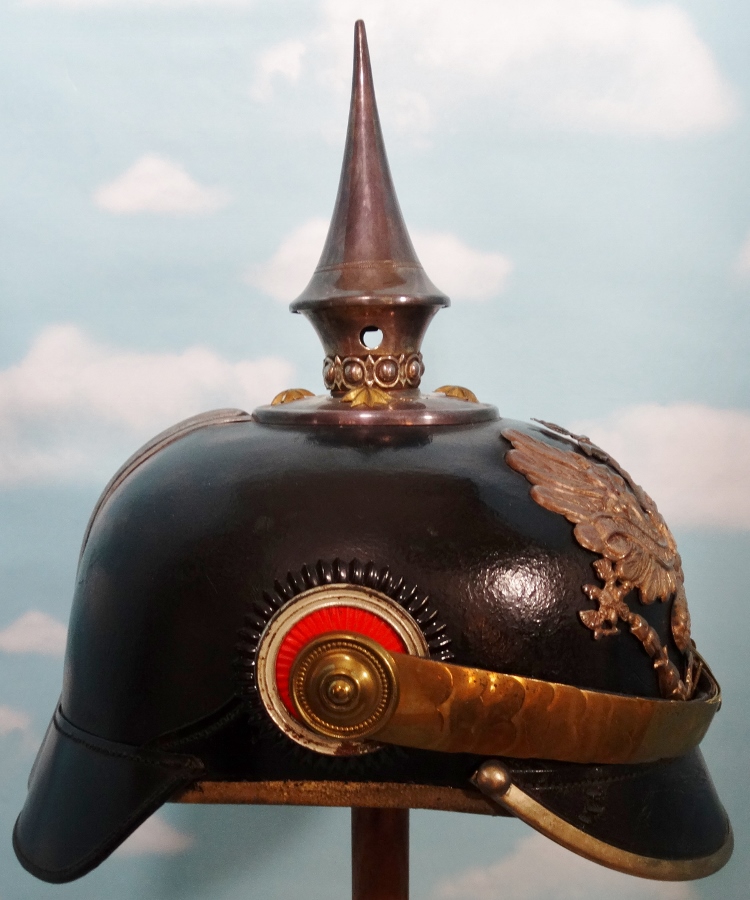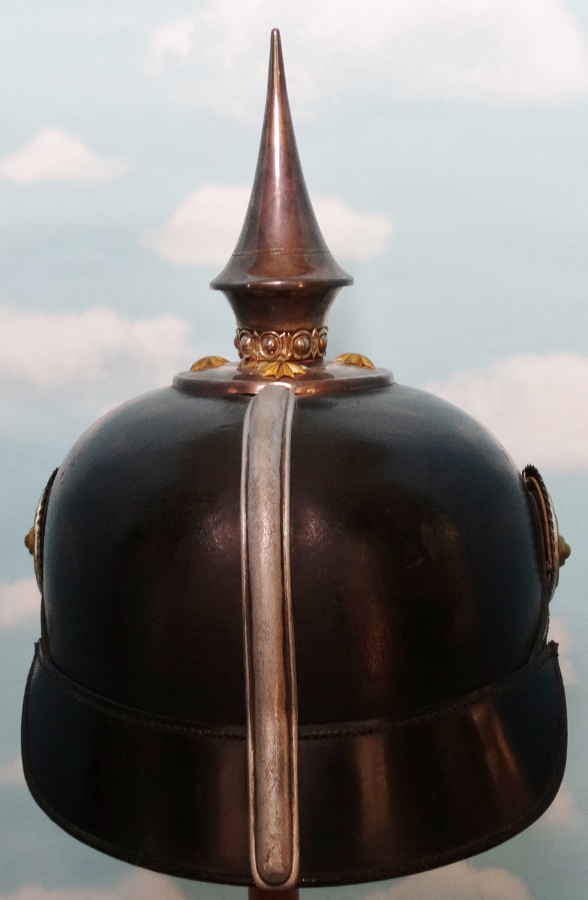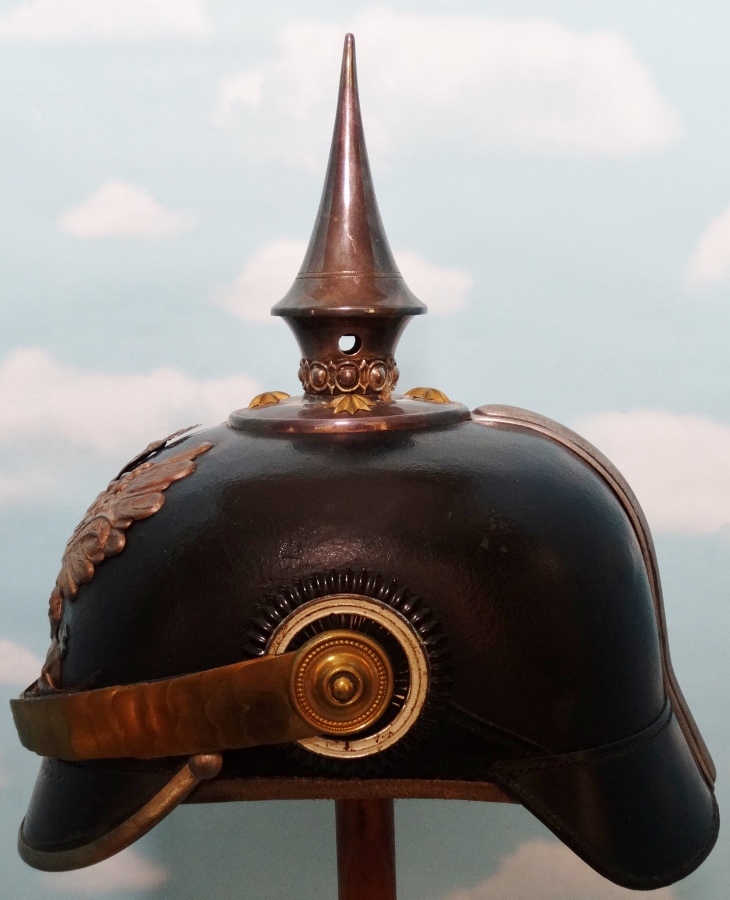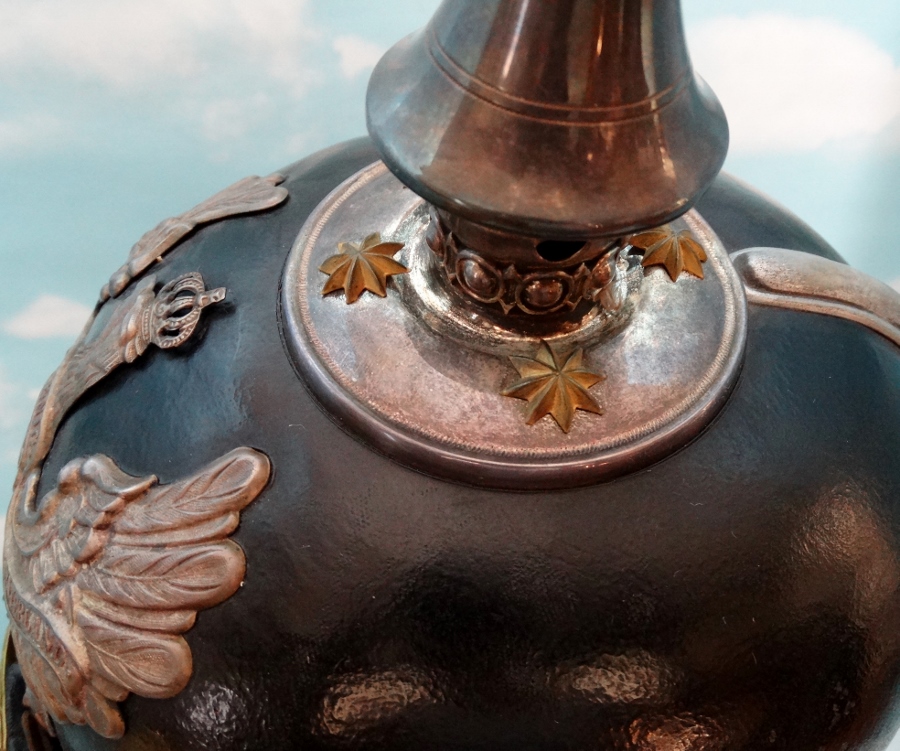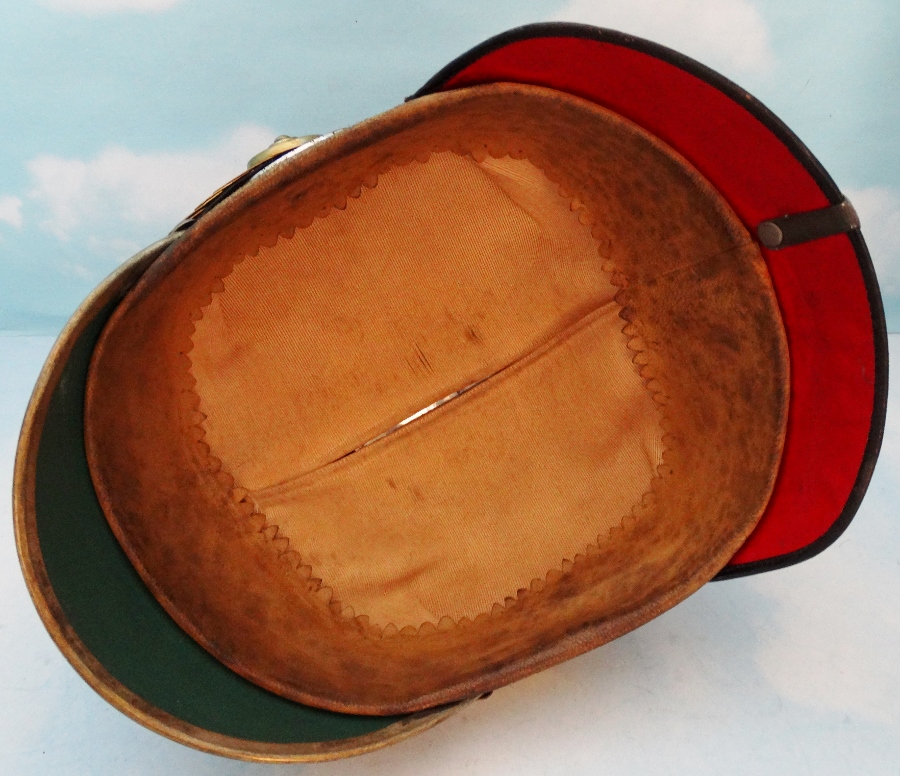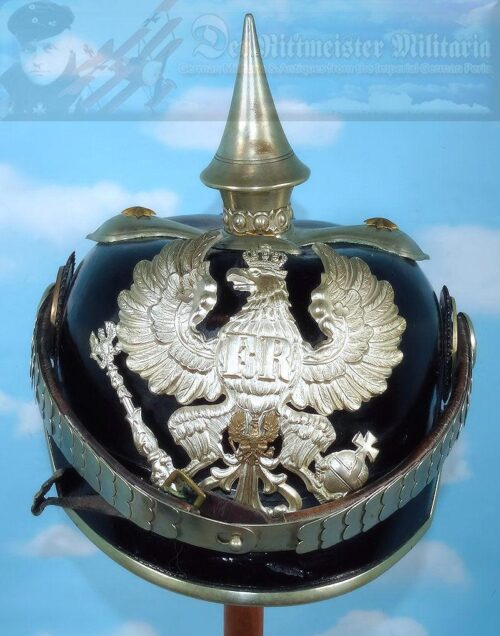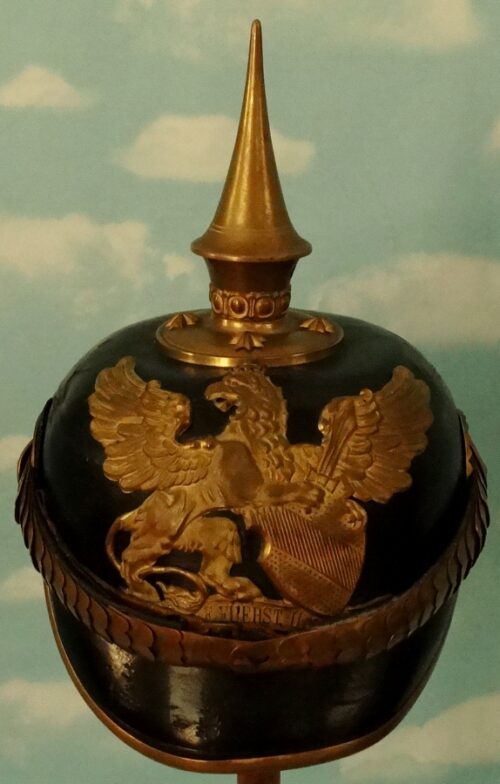Description
This is a first-rate Prussian Pionier (Engineer) Line-Bataillon officer’s pickelhaube. The helmet would be correct for Bataillon Nr’s 2, 4, 5, 6, 7, 8, 9, 11, 15, 16, 17, 18, 19, 20, 21, 23, 24, 25, 26, 27, 28, 20, or 30. [Prussian Bataillon Nr’s 1, 3, and 10 displayed a slightly different wappen]. (One Garde-Pionier-Bataillon also existed). For those of you unfamiliar with the term “Pionier,” these men were the German Army’s engineers. Their primary function was building bridges and other forms of military construction. Inquiring minds want to know, “How does one distinguish a Pionier Pickelhaube from, say, an Infanterie Pickelhaube?”
That is an excellent question! To answer, one starts with a rounded front visor, the same as that found on an Infanterie helmet. Next, the wappen, cruciform, trim, and the spike are silver-toned. The chin scales (they are flat, as are Infanterie scales) and officer’s stars are gilt. An Infanterie Pickelhaube has all gilt furniture. So, the silver wappen, spike, and trim are major giveaways. We can safely identify our helmet as belonging to a engineer rather than an infantryman. I want to point out that the helmet’s condition is exceptional. Its leather body is just gorgeous. All of the furniture, whether silver or gilt, is magnificent. As a matter of fact, pay special attention to the wappen and the hardware’s other silver pieces. All have a marvelous patina. The toning is first-rate. The correct Prussian and Reich’s kokarden are present. The helmet has been well cared for by its previous owners. The next owner of such a piece of history has an obligation to continue the same care in displaying and owning this pickelhaube. Its interior is equally pristine. It sports a fine leather sweatband and a complete light-brown or tan silk liner. Under the liner, we can see that the helmet is marked a size “56.” We can also see that all the original hardware is correct and properly in place.
Overall, this spiked helmet is 100% original and in superb condition. Finding a PIONIER helmet in such pristine condition is not easy, since far fewer Pionier Bataillons existed than did Infanterie regiments.


